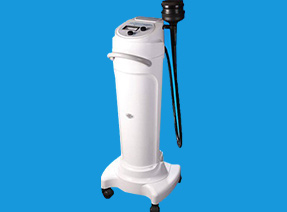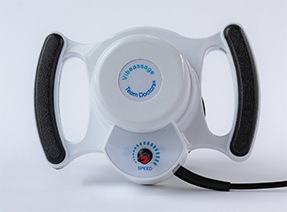THE HUMAN SPRING APPROACH TO
THORACIC OUTLET SYNDROME
by Dr James Stoxen DC., FSSEMM (hon) FWSSEM
GLOSSARY
D
DEA (Drug Enforcement Administration) – The Drug Enforcement Administration (DEA) is a United States federal law enforcement agency under the U.S. Department of Justice, tasked with combating drug smuggling and use within the United States.
Dead Arm Syndrome – is characterized by a sudden sharp or ’paralyzing’ pain when the shoulder is moved forcibly into a position of maximum external rotation in elevation or is subjected to a direct blow. Patients who experience enough trauma to cause a dead arm syndrome can also get a related thoracic outlet syndrome. Dead Arm syndrome is a common misdiagnosed thoracic outlet syndrome and vice versa.
declined sitting posture – The user’s thighs are inclined with the buttocks higher than the knee and the angle between the thighs and the torso is greater than 90 degrees.
decubitus ulcers (bedsores, pressure ulcers) — are injuries to skin and underlying tissue resulting from prolonged pressure on the skin. Bedsores most often develop on skin that covers bony areas of the body, such as the heels, ankles, hips and tailbone.
deep tissue massage (deep tissue therapy) – manual therapy that focuses on realigning deeper layers of muscles and connective tissue.
deep tissue therapy – manual therapy that focuses on realigning deeper layers of muscles and connective tissue.
deep vein thrombosis – thrombosis in a vein lying deep below the skin, especially in the legs but it can be in any deep vein.
deep vein thrombosis (DVT) – a blood clot that forms in a vein deep in the body.
defibrillator devices – an implantable cardioverter defibrillator (ICD) is a small device that’s placed in the chest or abdomen. Doctors use the device to help treat irregular heartbeats called arrhythmias.
deformation – the action or process of changing in shape or distorting, especially through the application of pressure.
deformation (elastic) – elastic deformation refers to a temporary deformation of a material’s shape that is self-reversing after removing the force or load.
deformation (plastic) – deformation refers to a temporary deformation of a material’s shape that is does not reverse after removing the force or load. It is deformed permanently.
deforming force – forces acting on a body, bring about a change in its state or configuration in the length, volume or shape.
degeneration – a process by which a tissue deteriorates, loses functional activity.
degenerative disc disease – breakdown of an intervertebral disc of the spine.
degenerative joint disease – (Degenerative joint disease (DJD), osteoarthritis) – a nonsystemic, noninflammatory, progressive disorder of movable joints that is associated with aging and accumulated trauma. It is characterized by ulceration of articular cartilage that leaves the underlying bone exposed.
delayed onset muscle soreness (DOMS) – delayed onset muscle soreness is the pain and stiffness felt in muscles several hours to days after unaccustomed or strenuous exercise. The soreness is felt most strongly 24 to 72 hours after the exercise.
delayed onset muscle soreness (DOMS) – the pain and stiffness felt in muscles several hours to days after unaccustomed or strenuous exercise. The soreness is felt most strongly 24 to 72 hours after the exercise.
depression – feelings of severe despondency.
dexterity (hand) – Fine motor skill (or dexterity) is the coordination of small muscles, in movements—usually involving the synchronization of hands and fingers—with the eyes. The complex levels of manual dexterity that humans exhibit can be attributed to and demonstrated in tasks controlled by the nervous system.
diabetic neuropathy – diabetic neuropathy is a nerve disorder caused by diabetes mellitus.
diabetic neuropathy may be diffuse, affecting several parts of the body, or focal, affecting a specific nerve and part of the body.
diagnosed – identify the nature of (an illness or other problem) by examination of the symptoms.
diagnosis – the art or act of identifying a disease from its signs and symptoms.
diagnosis the act or process of identifying or determining the nature and cause of a disease or injury through evaluation of the patient’s history, examination, and review of laboratory data.
diagnostic test – a diagnostic test is any kind of medical test performed to aid in the diagnosis or detection of disease, injury or any other medical condition.
diagnostic tests – medical diagnostic test is a medical test used to aid in the diagnosis of a patient’s condition.
diagnostic ultrasound – medical ultrasound (also known as diagnostic sonography or ultrasonography) is a diagnostic imaging technique based on the application of ultrasound. It is used to see internal body structures such as tendons, muscles, joints, vessels and internal organs. Its aim is often to find a source of a disease or to exclude any pathology.
differential diagnosis – the distinguishing of a particular disease or condition from others that present similar signs and symptoms.
digital subtraction angiography (DSA) – a type of fluoroscopy technique used in interventional radiology to clearly visualize blood vessels in a bony or dense soft tissue environment.
digital x-rays (digital radiography) – a form of X-ray imaging, where digital X-ray sensors are used instead of traditional photographic film.
disability – a physical or mental condition that limits a person’s movements, senses, or activities.
disc degeneration – degenerative disc disease (DDD) is characterized by the ongoing deterioration of the discs of the spine, often due to genetic factors, age and lifestyle changes.
disc herniation (slipped disc, bulged disc) – a medical condition affecting the spine in which a tear in the outer, fibrous ring of an intervertebral disc allows the soft, central portion to bulge out beyond the damaged outer rings.
disc protrusion – a condition in which the outermost layers of the annulus fibrosus or the covering of the intervertebral disc of the spine is intact, but they bulge when they are under pressure.
disease – a disorder of structure or function in a human, animal, or plant, especially one that produces specific signs or symptoms or that affects a specific location and is not simply a direct result of physical injury.
disputed thoracic outlet syndrome – (thoracic outlet test) people with nonspecific-type thoracic outlet syndrome have chronic pain in the area of the thoracic outlet that worsens with activity, but a specific cause of the pain can’t be determined due t a lack of findings on diagnostic tests. The symptoms of thoracic outlet syndrome are oftentimes vague.
disputed TOS – patients with nonspecific-type thoracic outlet syndrome have chronic pain in the area of the thoracic outlet that worsens with activity, but a specific cause of the pain can’t be determined.
dissipate –to disperse or scatter.
DJD – (Degenerative joint disease, osteoarthritis) – a nonsystemic, noninflammatory, progressive disorder of movable joints that is associated with aging and accumulated trauma. It is characterized by ulceration of articular cartilage that leaves the underlying bone exposed.
Doppler ultrasonography – Doppler ultrasound is a noninvasive test that can be used to estimate the blood flow through your blood vessels by bouncing high-frequency sound waves (ultrasound) off circulating red blood cells.
Dorn method – a form of manual, holistic alternative therapy claimed to be used to correct misalignments in the spinal column and other joints.
double crush syndrome – compression or local irritation of a peripheral nerve at more than one site along its course.
drop foot (foot drop) – a gait abnormality in which the dropping of the forefoot happens due to weakness, irritation or damage to the common fibular nerve including the sciatic nerve, or paralysis of the muscles in the anterior portion of the lower leg.
Drug Enforcement Administration (DEA) – a United States federal law enforcement agency under the U.S. Department of Justice, tasked with combating drug smuggling and use within the United States.
dry needling (myofascial trigger point dry needling) – the use of either solid filiform needles (also referred to as acupuncture needles) or hollow-core hypodermic needles for therapy of muscle pain, including pain related to.
duplex scanning (duplex ultrasound scan) – a quick, simple, painless, non-invasive method of looking at arteries and veins and measuring their size and the flow of blood through them.
dynamic activity – activity where the body is moving.
dynamic equilibrium – when all forces are balanced, when moving, like walking, running, or other activity.
dynamic posture evaluation – is the alignment of your body while you are moving.
dyspnea – difficult or labored breathing.
Dystonia – a state of abnormal muscle tone resulting in muscular spasm and abnormal posture, typically due to neurological disease or a side effect of drug therapy.

Meet Dr James Stoxen DC., FSSEMM (hon)
President, Team Doctors® Masters Academy
www.drstoxen.com
Dr Stoxen’s Curriculum Vitae
Stay connected to our thoracic outlet syndrome social media sites
1.1k
Members

READ THESE CHAPTERS OF DR STOXENS BOOK FREE HERE!
ARTICLE CATEGORIES
- Testimonials (13)
- Success Stories (13)
- Failed TOS Surgery (1)
- Thoracic Outlet Syndrome (11)
- Compartment Syndrome – Forearm (5)
- Shoulder Replacement Surgery (1)
- Cervical Discectomy (1)
- Cervical Fusion Surgery (1)
- What is TOS? (3)
- Thoracic Outlet Anatomy (1)
- Thoracic Outlet Engineering (1)
- Causes Of TOS (6)
- The TOS Examination (1)
- Diagnostic Tests for TOS (1)
- What Mimics TOS? (1)
- Paget-Schroetter Syndrome (2)
- TOS Surgery (2)
- Posture Tips (1)
- Self Treatment (1)
- What doesn’t work and why? (1)
- What works and why? (1)
- Stretches for TOS (1)
- Exercises for TOS (1)
- Surgery for TOS (1)
- Case Studies (2)
- Chapter Reviews (10)
- Uncategorized (16)
VIDEO TUTORIALS
Subscribe to our newsletter
Team Doctors® Master’s Academy
Professional Development Courses
Launching January 1, 2022!
Team Doctors® Master’s Academy
Patient Self-Care Workshops
Launching January 1, 2022!


















